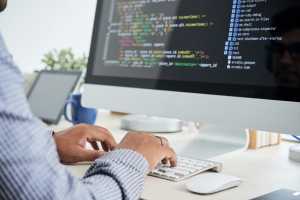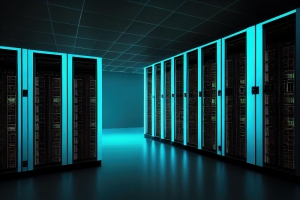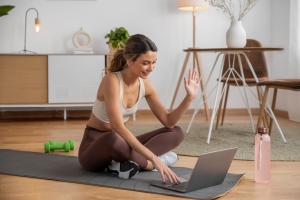Traditionally, doctors and nurses had to be near their patients to monitor their condition. This was necessary but time-consuming to ensure patient care.
Nowadays, medical devices are quickly evolving to introduce advancements in healthcare. These tools even allow healthcare workers to monitor their patients remotely. An example of this is movement sensor technology.
This piece will discuss the role of movement sensor tech and how it benefits healthcare. It will also explore potential issues and developments that transform overall patient care.
What is Movement Sensor Technology?
Movement sensors are devices that track a person's motion, positioning, and physical activity. You may already know them as smartwatches, wearable blood pressure monitors, and biosensors. These tools are some of the most popular examples.
In the medical field, motion sensors are integrated into wearable devices and smart beds. Home monitoring systems also utilize movement sensor technology for in-home patient care. The sensor collects data on how patients move, helping nurses and doctors make better healthcare decisions.
Due to consumer demand, many companies create and distribute their movement sensors. Their devices are small and battery-powered, making them practical and portable. They detect movement easily, from getting out of bed to walking out the door. You can find high-quality sensors from reputable providers and websites like frequencyprecision.com.
Applications in Patient Care
Movement sensor devices have multiple applications in healthcare. Here are some ways these tools can aid both patients and medical workers.
Fall Prevention and Detection
Some patients, especially older adults, are prone to falling when left alone. Patient falls are a significant concern because they could lead to severe injuries such as concussions and broken bones.
With a movement sensor, doctors and nurses can detect sudden movements or unusual activity even when far from their patients. The device will instantly send alerts for caregivers to respond quickly. Some systems may even predict falls based on the patient's movement patterns. This feature helps prevent accidents before they occur, creating a safe indoor environment.
Remote Patient Monitoring
The most notable quality of movement sensor technology is remote monitoring. Patients who opt for in-home care can still be looked after by their doctors and nurses on duty. Home health workers can easily track mobility and activity levels in real-time, even when away from the patient's residence.
The devices are handy for patients with chronic conditions like arthritis or Parkinson's. Certain movement patterns could indicate worsening symptoms. And instead of frequent hospital visits, patients get assessed remotely, reducing discomfort and stress.
Rehabilitation and Physical Therapy
Movement sensors can be quite useful for patients recovering from surgery or major injuries. They track how patients move, helping physical therapists identify if exercises are performed correctly. Other active sensors could also offer real-time feedback to hasten recovery and make therapy more engaging.
Sleep and Vital Sign Monitoring
Movement sensors continue working while the patient is asleep. And it's a good thing, too, since quality sleep ensures more efficient healing.
A reliable device can monitor sleep patterns, detect disturbances, and track breathing and heart rate. As such, it's also fantastic for checking vital signs. Doctors can identify new or persisting sleep disorders or underlying health issues remotely.
Benefits of Movement Sensor Tech in Healthcare
With many patients choosing against traditional clinical settings, movement sensor technology becomes more necessary. The tools help reduce overall workload, offering more efficient remote healthcare.
Most motion devices have adjustable sensitivity features, personalizing each one to specific patients. For elderly patients or those with chronic conditions, the sensors give them a sense of independence. They can go about their daily lives knowing help is just one call or button away.
Cutting down on healthcare costs is another benefit. With a working movement sensor, patients don't need to visit the hospital often for medical assessments.
Challenges and Future Developments

As movement sensor technology continues to improve, some devices may exhibit hurdles. For one, privacy is a big concern. Patients need to trust that their data is secure between them and their healthcare provider.
Another glaring issue is data-retrieval accuracy. Not all monitoring devices are made the same, and some are prone to making mistakes. False alarms and missed detections are also issues. They could cause panic while missing sudden negative changes, which could be dangerous.
However, artificial intelligence (AI) and predictive analytics integrations are helping fine-tune these systems. Personalization is also improving, tailoring devices to provide recommendations based on specific medical conditions.
As technology evolves, movement sensors will become more portable and available to more patients. People will also have better access to remote healthcare, making patient care more effective and precise.
Conclusion
Besides medication, advancements in medical tools are also making their mark. Movement sensor technology is just one of those you can expect to make waves in healthcare.
These devices are great for fall detection and real-time remote monitoring. Medical workers can check on their patients despite the distance. With continued research, movement sensors may become more sophisticated, allowing healthcare workers to provide better ongoing care.
Sponsored Post: This article is a sponsored post.






